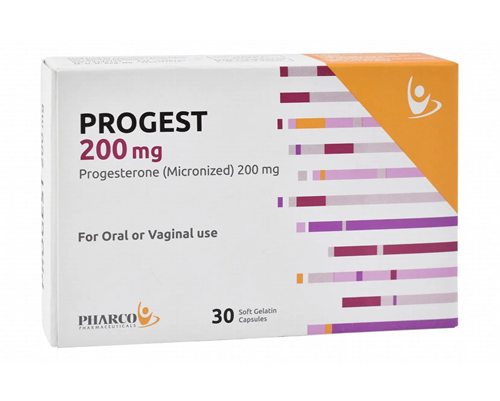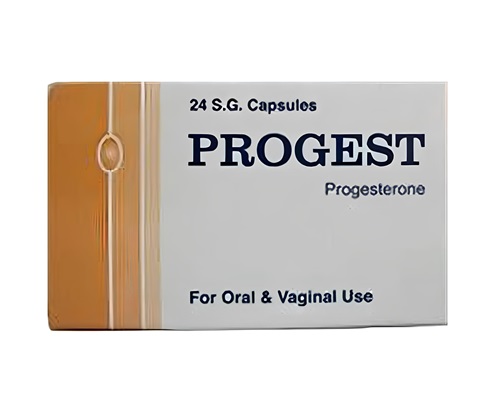Description
Trade name:
Gynera
Compound:
Each tablet contains:
gestodene 0.075 mg
ethinyl estradiol 0.03 mg
Excipients: sodium calcium edetate, lactose monohydrate, corn starch, povidone 25, magnesium stearate.
Properties:
Combined oral hormonal contraceptive.
The gestagenic component is a derivative of 19-nortestosterone – gestodene, which is superior in strength and selectivity of action not only to the natural hormone of the corpus luteum progesterone, but also to other synthetic gestagens (for example, levonorgestrel). Due to its high activity, gestodene is used in low doses, in which it does not exhibit androgenic properties and has virtually no effect on lipid and carbohydrate metabolism.
The estrogenic component of the combination is ethinyl estradiol, a synthetic analogue of the follicular hormone estradiol, which, together with the corpus luteum hormone, is involved in the regulation of the menstrual cycle.
In addition to the above-mentioned central and peripheral mechanisms that prevent the maturation of a fertilizable egg, the contraceptive effect is due to a decrease in the susceptibility of the endometrium to the blastocyst, as well as an increase in the viscosity of the mucus in the cervix, which makes it relatively impassable for sperm.
Indications:
Oral contraception.
Method of administration and dosage:
Tablets for oral administration.
The tablets should be taken every day, at approximately the same time of day, with a small amount of water if necessary.
The tablets should be taken in the direction indicated by the arrow on the blister.
Method of administration and dosage:
You should take one tablet of Zhinera consecutively for 21 days, until you take the last tablet of the pack. You should start taking tablets from the next pack after a 7-day tablet-free interval. Withdrawal bleeding may occur during the tablet-free interval, which usually starts 2-3 days after taking the last tablet and may not be finished by the time you start taking the first tablet of the new pack.
Start taking Zhinera:
If a woman did not use hormonal contraception in the previous month:
Taking Zhinera should begin on the first day of the cycle, i.e. on the first day of the onset of menstruation.
You can start taking Zhinera from the 2nd to the 5th day of your cycle; in this case, you must use additional barrier methods of contraception during the first 7 days of taking the pills.
Contraindications:
The presence of risk factors for venous thromboembolism; the presence of risk factors for arterial thromboembolism; severe liver disease (including history) until normalization of liver function tests; liver tumor (including history); severe chronic renal failure or acute renal failure; known or suspected hormone-dependent malignant tumors (including genital or mammary gland); vaginal bleeding of unknown etiology; pregnancy; lactation period (breastfeeding).
Precautions:
The benefits of hormonal contraception should be assessed individually for each woman and discussed with her before starting hormonal contraception.
Combined hormonal contraceptives, including fixed combinations of gestodene/ethinyl estradiol, should be used with caution in conditions that increase the risk of venous or arterial thrombosis/thromboembolism: age over 35 years, smoking, hereditary predisposition to thrombosis (thrombosis, myocardial infarction or cerebrovascular accident at a young age in any of the immediate relatives), hemolytic uremic syndrome, hereditary angioedema, liver disease, diseases that first appeared or worsened during pregnancy or against the background of previous use of sex hormones (including porphyria, herpes of pregnancy, chorea minor, Sydenham’s chorea, chloasma), obesity (BMI over 30 kg/m2), dyslipoproteinemia, arterial hypertension, migraine, epilepsy, valvular heart disease, fibrillation atria, prolonged immobilization, major surgery, surgery on the lower extremities, severe trauma, varicose veins and superficial thrombophlebitis, postpartum period (non-lactating women /21 days after delivery/; lactating women after the end of the lactation period), the presence of severe depression (including in the anamnesis), changes in biochemical parameters (resistance of activated protein C, hyperhomocysteinemia, antithrombin III deficiency, protein C or S deficiency, antiphospholipid antibodies, including antibodies to cardiolipin, lupus anticoagulant), diabetes mellitus not complicated by vascular disorders, SLE, Crohn’s disease, ulcerative colitis, sickle cell anemia, hypertriglyceridemia (including in the anamnesis), acute and chronic liver diseases.
In case of suspected or established venous or arterial thromboembolism, the use of combined hormonal contraceptives should be discontinued. If anticoagulant therapy is initiated, adequate alternative contraception should be initiated to avoid the teratogenic effect of anticoagulant therapy (coumarins).
The use of any combined oral contraceptive increases the risk of venous thromboembolism.
Side effects:
From the cardiovascular system: arterial hypertension; rarely – arterial and venous thromboembolism (including myocardial infarction, stroke, deep vein thrombosis of the lower extremities, pulmonary embolism); very rarely – arterial or venous thromboembolism of the hepatic, mesenteric, renal, retinal arteries and veins.
From the sensory organs: hearing loss due to otosclerosis.
From the reproductive system: acyclic bleeding/bloody discharge from the vagina, amenorrhea after discontinuation of the drug, changes in the condition of vaginal mucus, development of inflammatory processes in the vagina, candidiasis, tension, pain, enlargement of the mammary glands, galactorrhea.
From the digestive system: epigastric pain, nausea, vomiting, Crohn’s disease, ulcerative colitis, occurrence or exacerbation of jaundice and/or itching associated with cholestasis, cholelithiasis, hepatitis, liver adenoma.
From the skin and its appendages: erythema nodosum, exudative erythema, rash, chloasma, increased hair loss.
From the nervous system: headache, migraine, mood lability, depression.
From the sensory organs: hearing loss, increased sensitivity of the cornea (when wearing contact lenses).
From the side of metabolism: fluid retention in the body, change (increase) in body weight, decreased tolerance to carbohydrates, hyperglycemia, increased TG levels.
Others: allergic reactions, hemolytic uremic syndrome, porphyria; rarely – exacerbation of reactive systemic lupus erythematosus; very rarely – Sydenham’s chorea.
Storage method:
Store at temperatures not exceeding 30 degrees.









